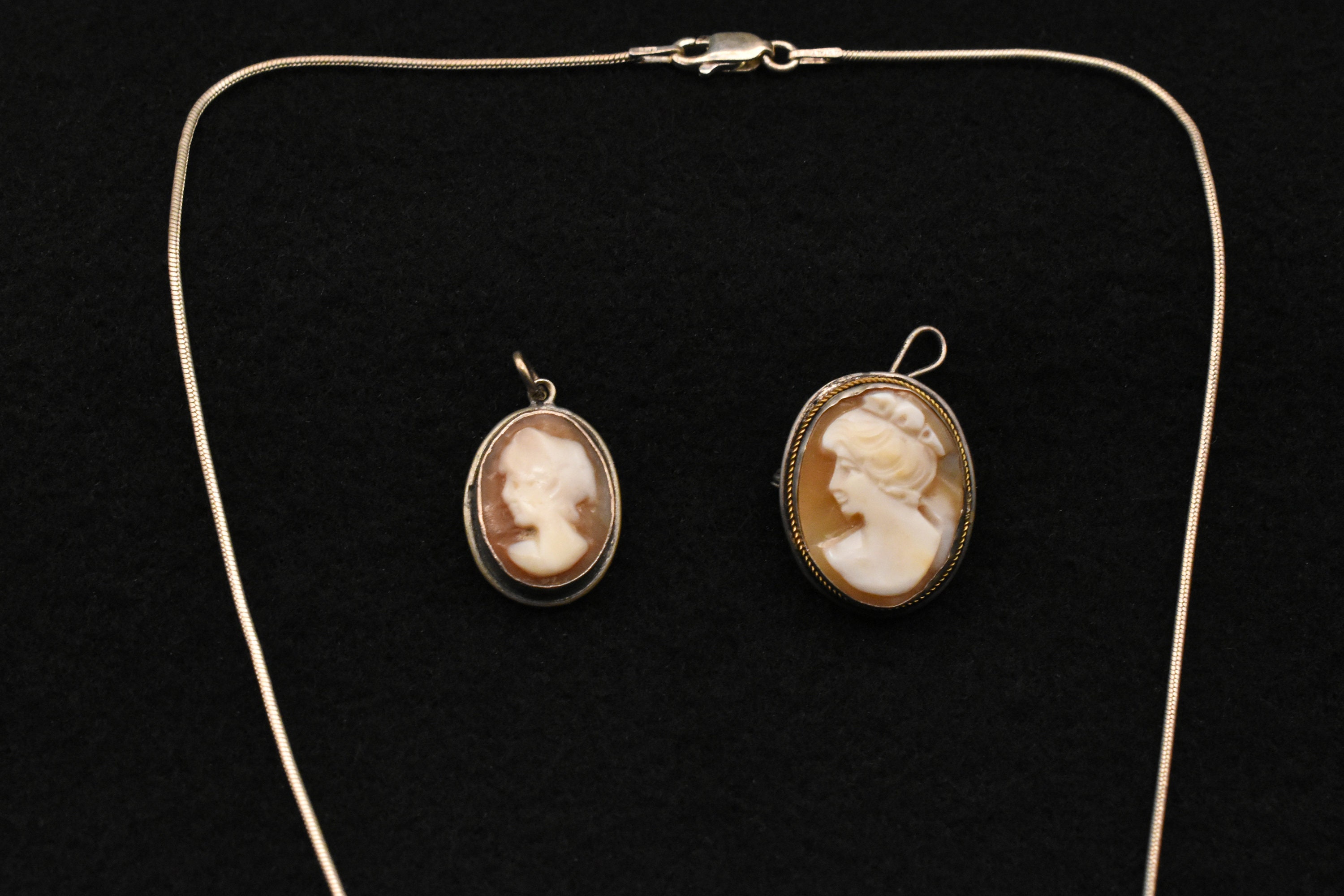
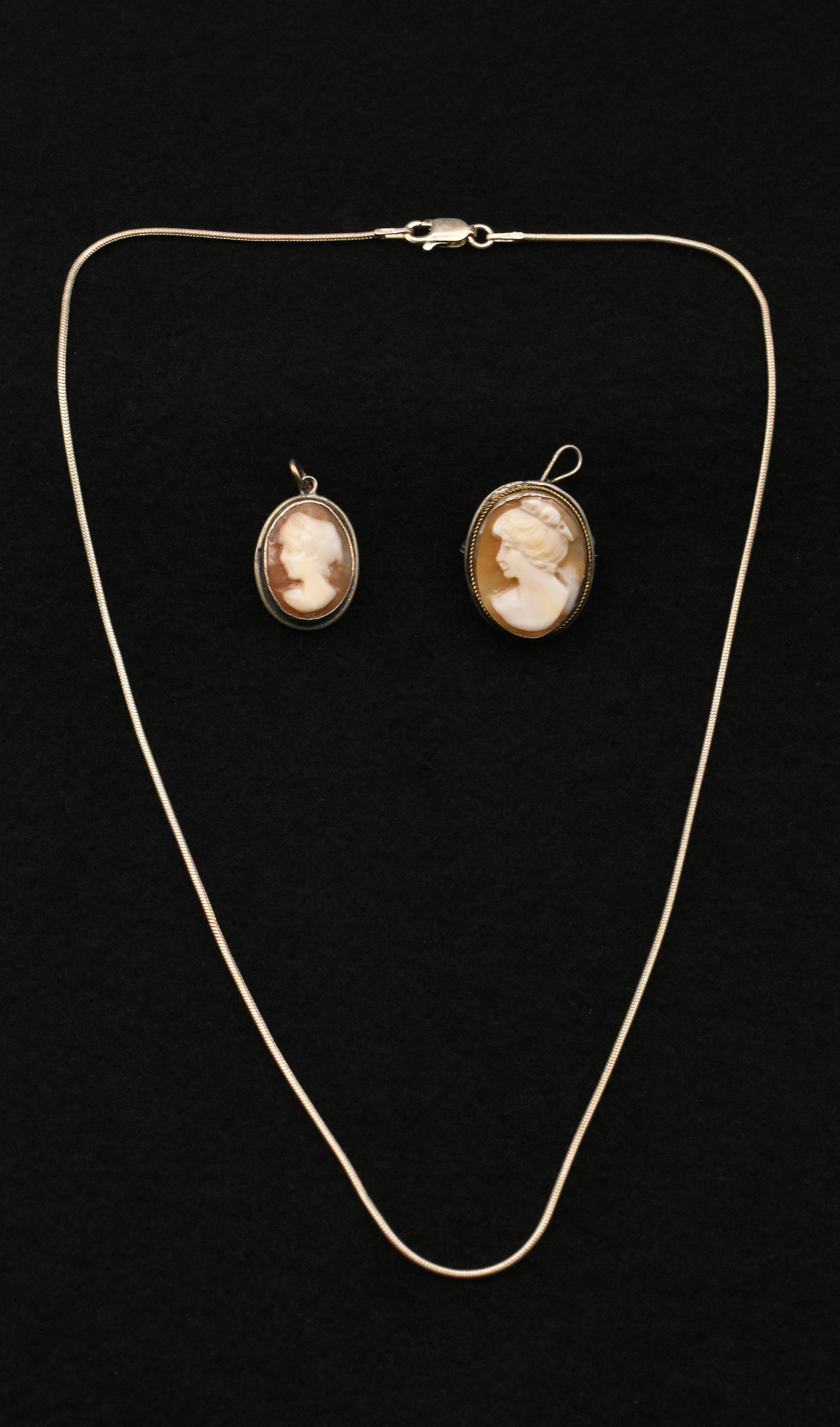
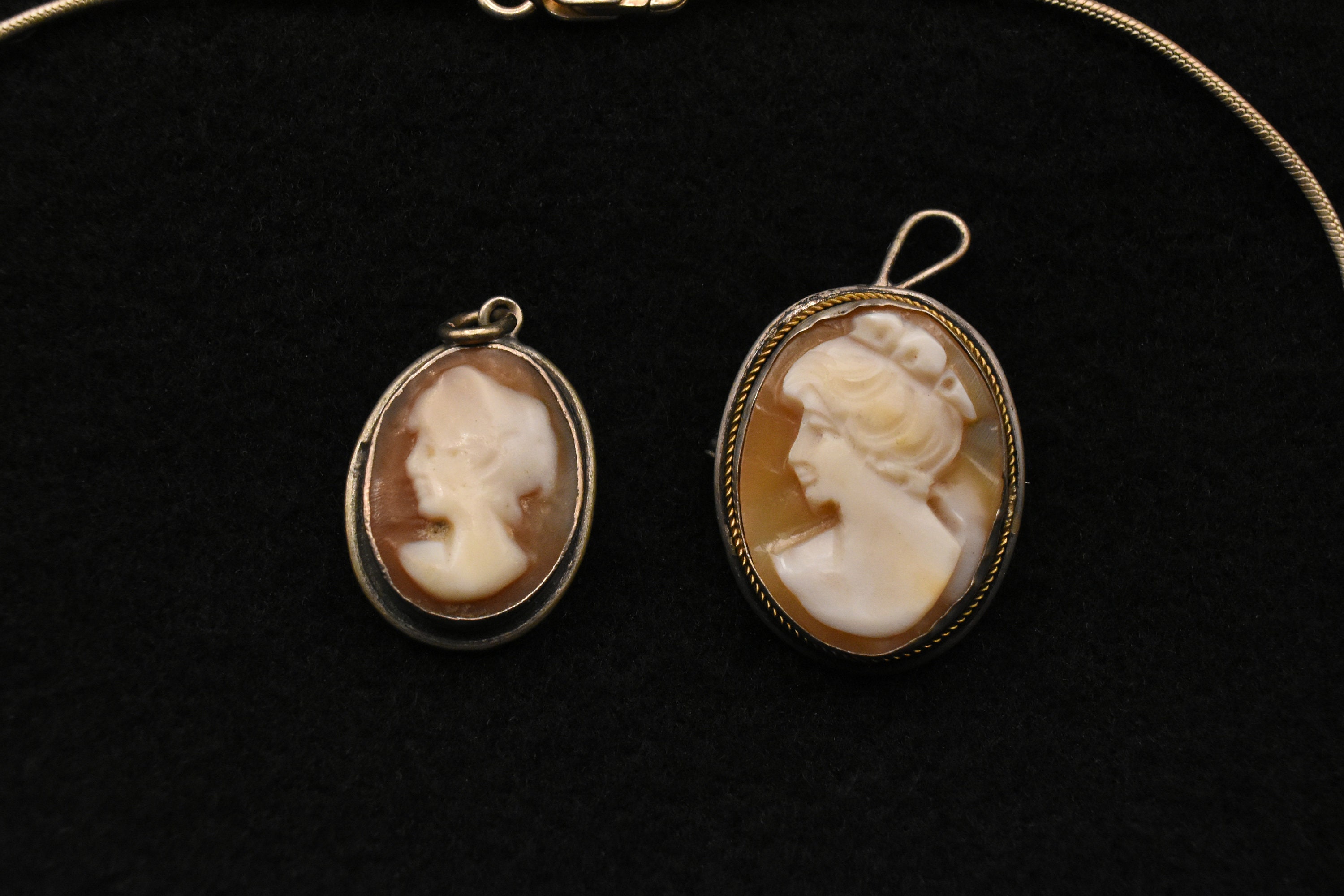
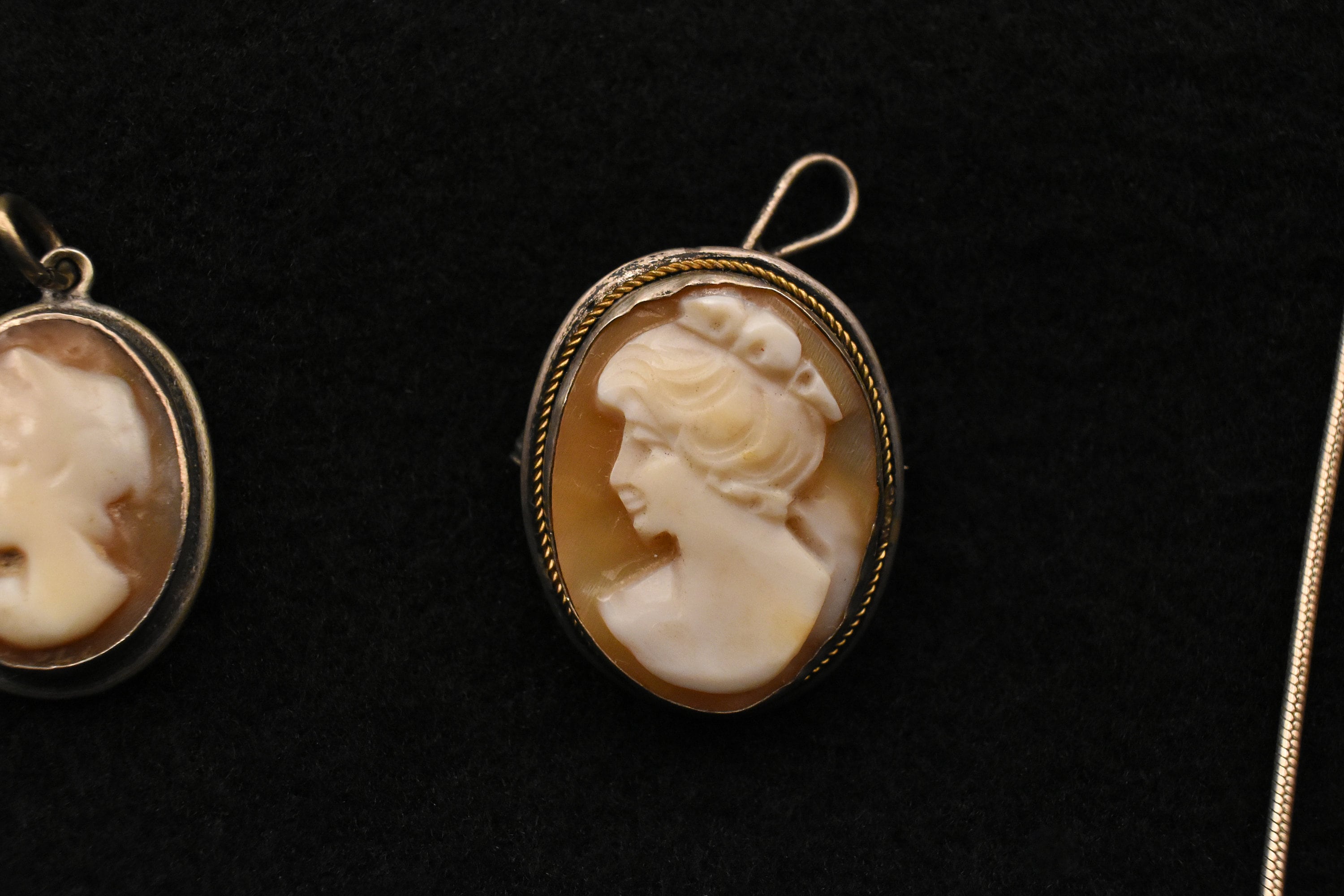

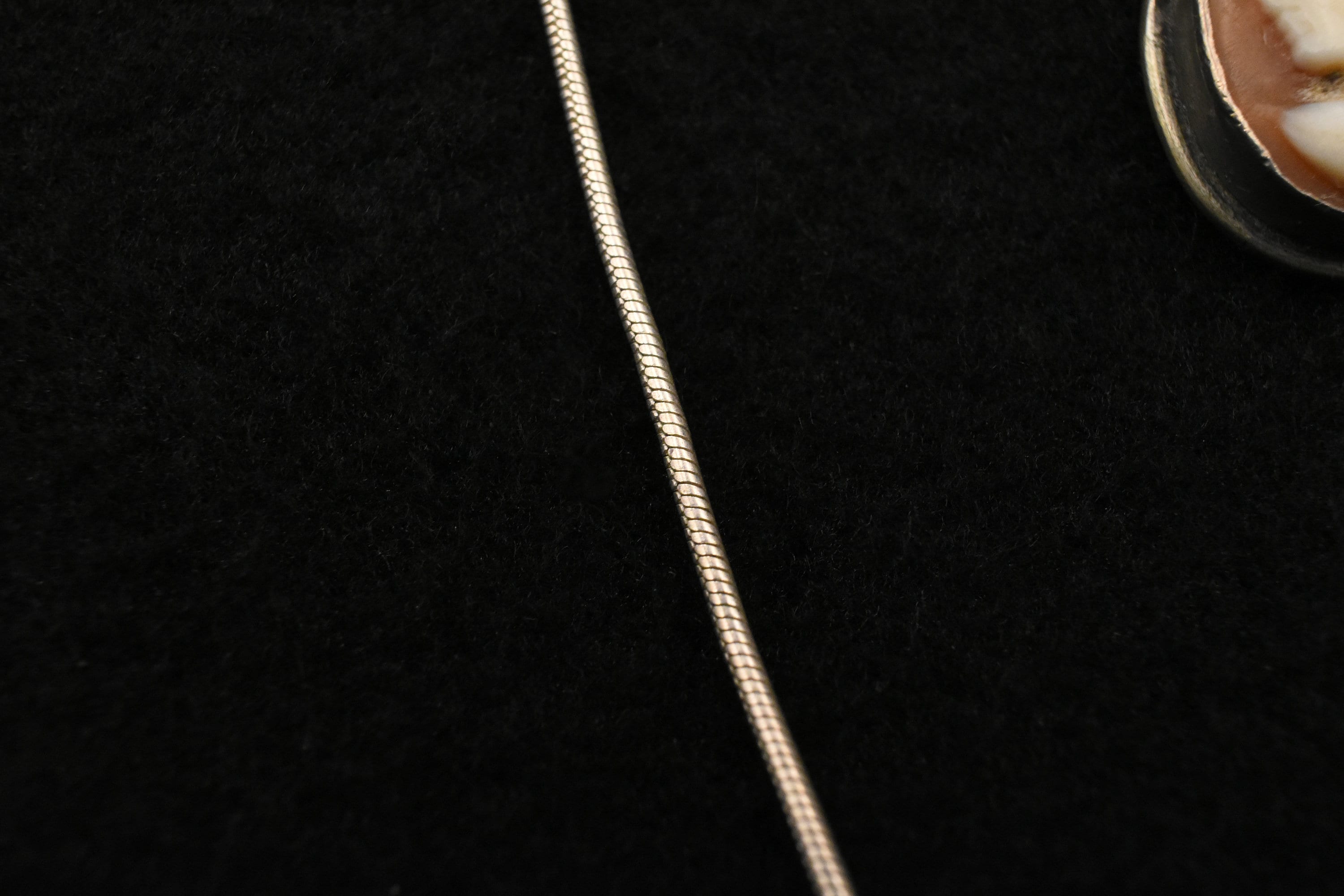

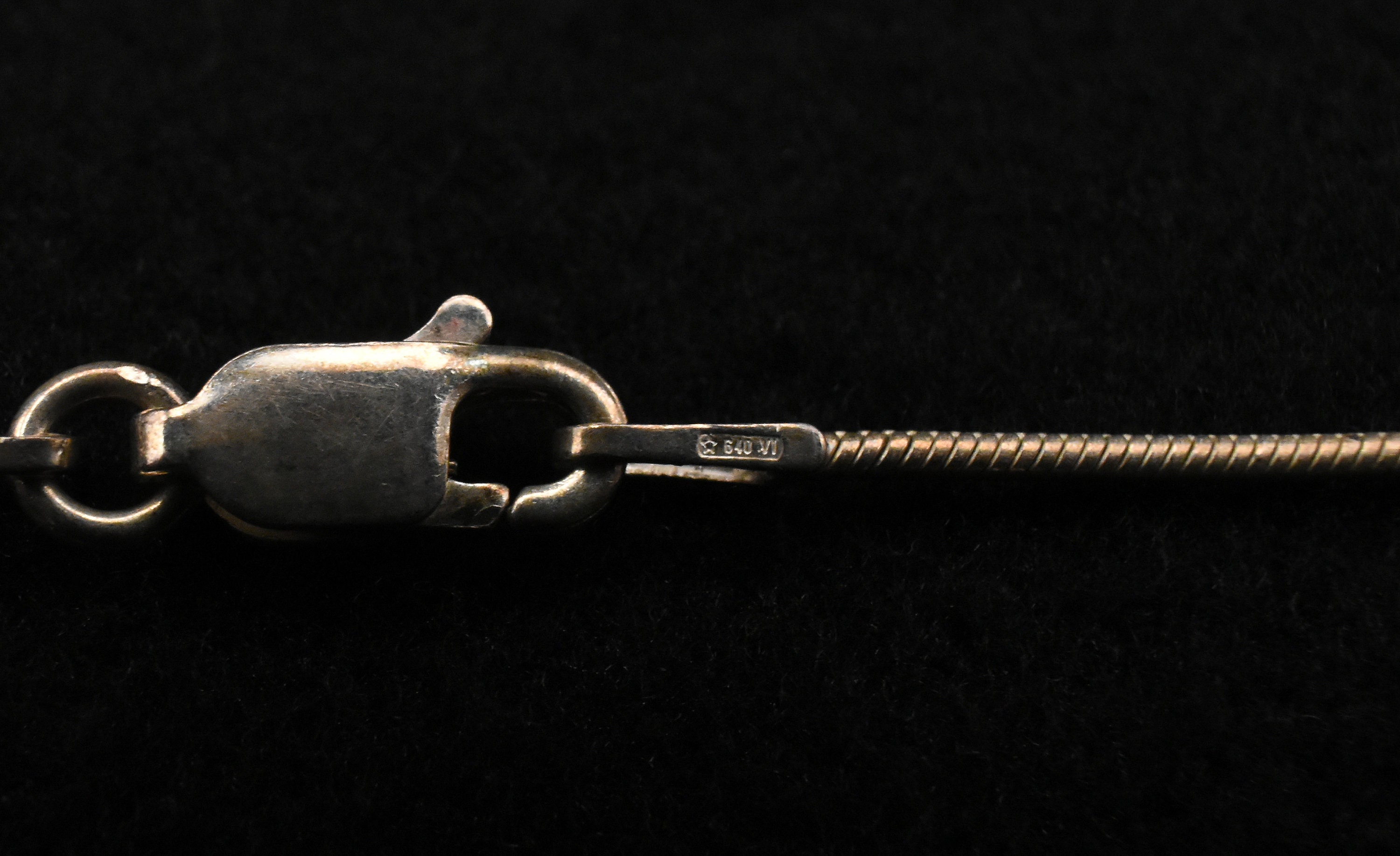
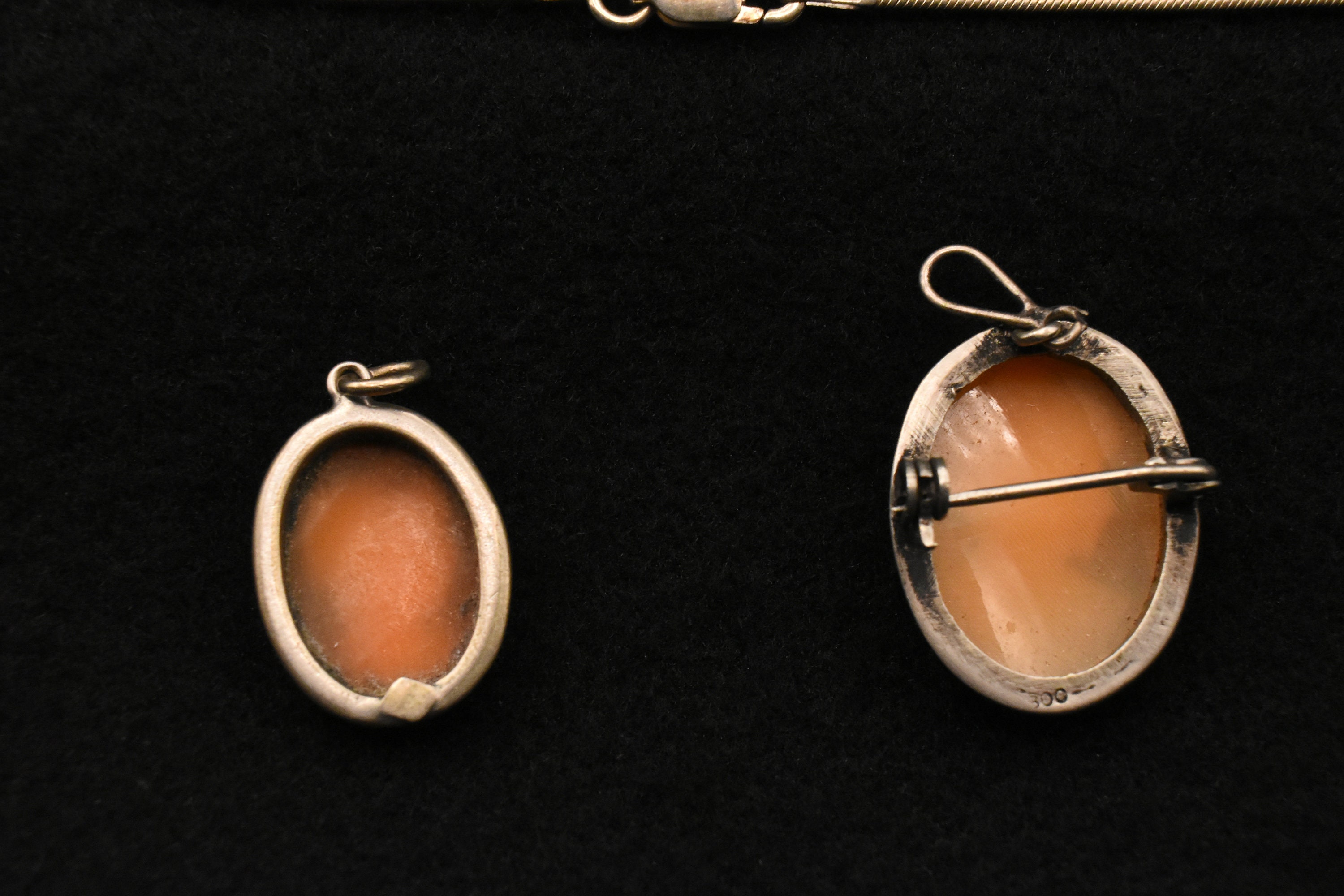

Antiques
Beautiful Pair of Antique Cameos and Vintage Italian Sterling Silver Chain
$141.72
-
DetailsThese cameos are original, Victorian beauties, being sold with a beautiful, vintage, Italian snake chain, but there's something a tad unusual about them... Which direction are your cameos facing? More to follow...
Cameos are not an uncommon item. Their history extends back to the 3rd Century BC, in Greece, and their popularity stretches all the way into the 19th century. The word 'cameo' actually refers to the method of carving an object such as an engraved gem, item of jewelry or vessel. It nearly always features a raised (positive) relief image. Originally, and still in discussing historical works, cameo only referred to works where the relief image was of a contrasting colour to the background. This was achieved by carefully carving a piece of material with a flat plane where two contrasting colours met, removing all the first colour except for the image to leave a contrasting background (think of shaving down a rock just to the point where the colour changes to the minerals within, and then using that colour-change border to create a background and relief image in two separate colours 0 it's incredibly precise and fragile work). The varied nature of cameos throughout history actually gives us a valuable tool to date these beautifully fragile pieces. Modern cameos can be produced by setting a carved relief, such as a portrait, onto a background of a contrasting colour. This is called an assembled cameo and is the preferred, modern (aka 'lazy') method. Alternatively, a cameo can be carved by the traditional, but far more difficult method, directly out of a material with integral layers or banding, such as (banded) agate or layered glass, where different layers have different colours. During Roman times, glass was the preferred medium for creating some stunning cameo pieces. I urge you to research some Roman glass vessels, carved with the most incredibly detailed images. Shells were occasionally used by the Romans, but not often. The use of shells in cameos was only developed in the renaissance (15th and 16th centuries). Shell varieties were limited throughout Europe, though, and they were usually white with a greyish background. In the mid-18th century, however, global exploration brought about the discovery of new species of shell... Conch shells are responsible for the classic cameo look - a white relief on an orange(-ish) background. Believe it or not, both colours are found in the shell and the layers are simply carved away to reveal the contrasting shades. It take decades of practice and apprenticeship to achieve such an admirable level of craftsmanship. After 1850, cameos skyrocketed in popularity among Grand Tour tourists and became a near-necessary accessory for the modern woman.
Cameos remain very popular, even today. They have been made using varying methods and continue to be made today, by machine. However, when looking at our pieces, it's very apparent that these were hand-made by skilled artisans.
Firstly, the larger cameo:
We must first must acknowledge one very important detail that I'll discuss in a little more detail, below: she's facing left. As well, she is quite beautiful. The edges are clear and the details on her face and hair are simply stunning. Under 30x magnification, you can even make out the carving marks left by the supremely-talented Victorian artist. Whether it was originally made as a brooch or pendant is unclear, as both fastening portions are meticulously attached to the frame. It is marked '800' to signify 80% silver content and has been verified via testing. The gold-toned 'rope' feature around the portrait is probably made with brass, but it could be gilt silver, as well. Sadly, it's too small a portion to test properly. The clasp works wonderfully and all the hardware is original to the piece. But if you really want to see the detail, take a bright light and shine it through the backing... the lines of her hair and the details on her face... Simply gorgeous. She measures just shy of 1 inch x about 3/4 of an inch.
Now the smaller cameo:
This one is not as impressive, but still beautiful. The frame tested positive for silver, at around 70%-80%. The portrait seems to have either been lost on a beach or perhaps not terribly cared-for, as the details of her visage have faded. One can still see the separation between the layers of conch shell. Perhaps she was an apprentice's piece. Perhaps she was a commissioned portrait. It doesn't matter, either way - she's still a beautiful pendant.
Now, I'll discuss the direction... both our cameos face left. Cameos were traditionally carved facing right. Left-facing, original and antique cameos are far more rare, even more so for front-facing cameos. The carving marks are mostly rubbed away, but it doesn't detract from her diminutive beauty. She measures 3/4 of an inch tall by just shy of half an inch wide.
Now, fake cameos are very common. They have been made with plastic, glass and even moulds for over a century. However, it is fairly easy to tell whether they're fake or not. NO... NOT the hot needle test! It can lead to damage, even if it's an original shell piece. A loupe is very useful, but oddly enough, tooth enamel is your best friend. Shell is very hard, unlike plastic. The easiest method of verifying your cameo's legitimacy is to (VERY) gently tap the piece against your tooth. Plastic has a hollow, yielding quality to it. This method is also useful in differentiating between modern, assembled cameos, where the relief is simply glued onto a plastic background, as this produces a dull sound. In this case, both pieces are legitimate, Victorian shell cameos and are just beautiful.
As for the chain, it's a handsome Sterling Silver snake chain measuring 41cm long. The clasp works wonderfully and the chain is in excellent condition. It has two markings, near the clasp. One reads '925ITALY' and obviously signifies Sterling silver. On the other side of the clasp is '"STAR" 640 VI.' After a little digging, I found that the 'VI' did not stand for a number... In fact, it is a registration number that is given to all Italian jewelers as a registration mark for authenticity and tax purposes, based on their location. I found that this jeweler - Agostino Roverato - is incredibly talented. You can see some of his admirable linked chains, if you care to search for them - simply gorgeous. The shop is called 'Vior' and is situated in Vicenza, located but a stone's throw from the artistic capital of Italy - Venice. Although newer, this chain was manufactured in the 1970s and although it doesn't share a spiritual heritage (being separated from the cameos by just shy of a century), they fit wonderfully with this handsome vintage chain.
As always, should you have any questions or comments, I'm always happy to respond to messages almost immediately.
Thank you for visiting C&K! -
Shipping & Policies
Shipping from Canada
Processing time
1-2 business days
Customs and import taxes
Buyers are responsible for any customs and import taxes that may apply. I'm not responsible for delays due to customs.
Payment Options
Returns & Exchanges
I gladly accept returns and exchanges
Just contact me within: 3 days of delivery
Ship items back to me within: 7 days of delivery
I don't accept cancellations
But please contact me if you have any problems with your order.
The following items can't be returned or exchanged
Because of the nature of these items, unless they arrive damaged or defective, I can't accept returns for:
- Custom or personalized orders
- Perishable products (like food or flowers)
- Digital downloads
- Intimate items (for health/hygiene reasons)
Conditions of return
Buyers are responsible for return shipping costs. If the item is not returned in its original condition, the buyer is responsible for any loss in value.
Frequently Asked Questions
Can I combine delivery on multiple items?
Of course! We'd be happy to assist. Just send us a quick message and we'll make sure to combine your items into a single package to reduce the shipping costs.



